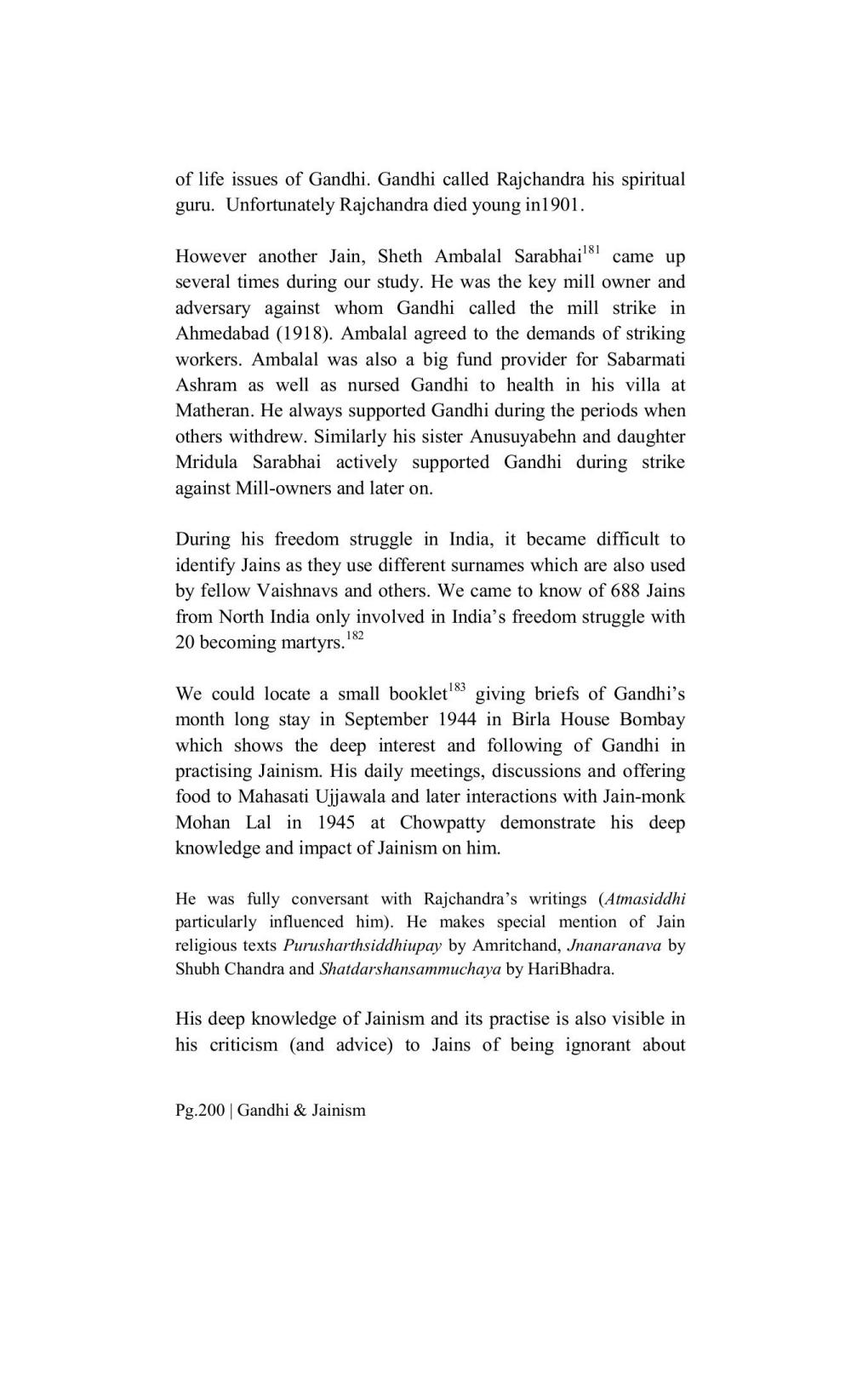________________
of life issues of Gandhi. Gandhi called Rajchandra his spiritual guru. Unfortunately Rajchandra died young in 1901.
However another Jain, Sheth Ambalal Sarabhaill came up several times during our study. He was the key mill owner and adversary against whom Gandhi called the mill strike in Ahmedabad (1918). Ambalal agreed to the demands of striking workers. Ambalal was also a big fund provider for Sabarmati Ashram as well as nursed Gandhi to health in his villa at Matheran. He always supported Gandhi during the periods when others withdrew. Similarly his sister Anusuyabehn and daughter Mridula Sarabhai actively supported Gandhi during strike against Mill-owners and later on.
During his freedom struggle in India, it became difficult to identify Jains as they use different surnames which are also used by fellow Vaishnavs and others. We came to know of 688 Jains from North India only involved in India's freedom struggle with 20 becoming martyrs. 182
We could locate a small booklet giving briefs of Gandhi's month long stay in September 1944 in Birla House Bombay which shows the deep interest and following of Gandhi in practising Jainism. His daily meetings, discussions and offering food to Mahasati Ujjawala and later interactions with Jain-monk Mohan Lal in 1945 at Chowpatty demonstrate his deep knowledge and impact of Jainism on him.
He was fully conversant with Rajchandra's writings (Atmasiddhi particularly influenced him). He makes special mention of Jain religious texts Purusharthsiddhiupay by Amritchand, Jnanaranava by Shubh Chandra and Shatdarshansammuchaya by HariBhadra.
His deep knowledge of Jainism and its practise is also visible in his criticism (and advice) to Jains of being ignorant about
Pg.200 | Gandhi & Jainism




